America's biggest workers' strikes of all time, from railroads to Hollywood
A summer of strikes
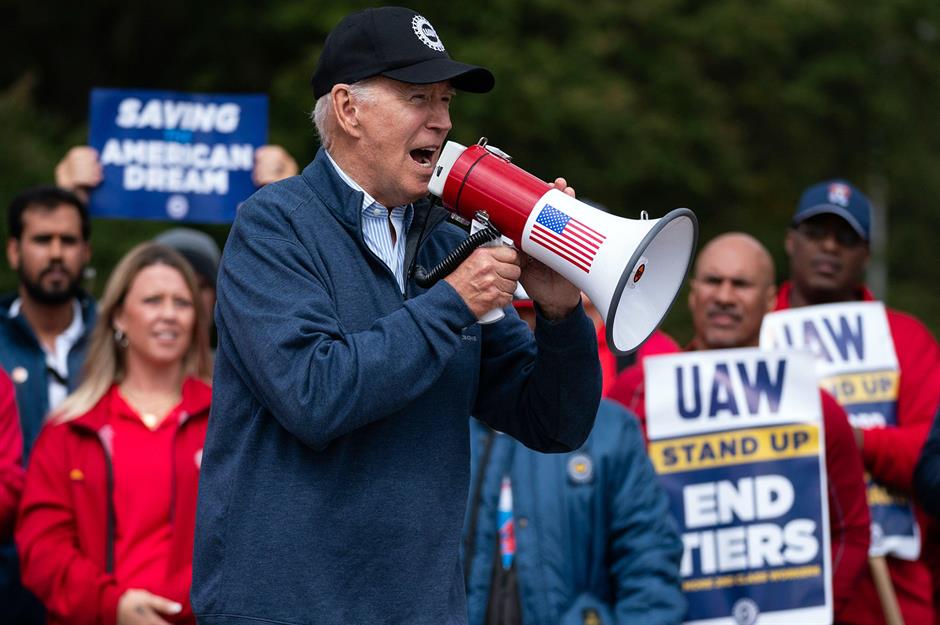
This week, Joe Biden made history by becoming the first sitting US president to join a picket line when he met with workers represented by the United Auto Workers Union (UAW) in Michigan. The UAW has recently expanded its industrial action against GM and Stellantis to 38 parts distribution centers across America, and around 18,000 workers have walked out to date.
In echoes of its historic industrial action in 1945, the UAW is seeking a 36% pay rise for its workers over four years and a 32-hour working week.
For centuries, workers in America have used collective bargaining to improve pay and employment conditions, with varying degrees of success. In fact, the first documented walkout on US soil, the Jamestown Polish Craftsmen's Strike, took place all the way back in 1619.
Read on to discover the stories behind the biggest strikes in American history, ordered by the number of workers who took part, and see where the current Hollywood strike ranks in the country’s biggest walkouts.
The Great Anthracite Coal Strike of 1902: 147,000 workers
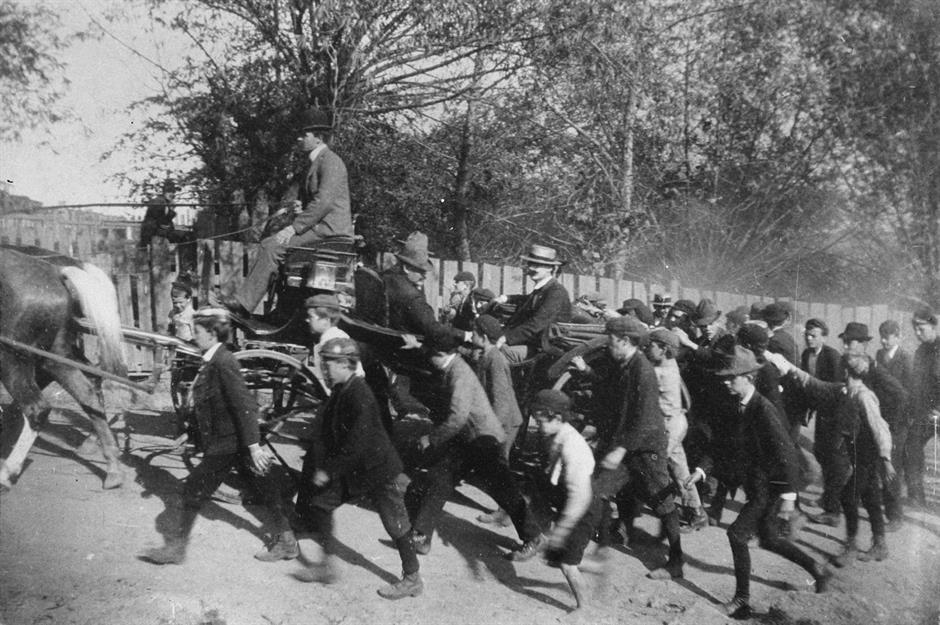
A pivotal walkout in the history of the American labor movement, the Great Anthracite Coal Strike of 1902 marked a change of tact for the US government from strikebreaker to peacemaker.
The industrial action kicked off on May 12, 1902, after mine operators in Eastern Pennsylvania refused to meet with reps from the United Mine Workers of America to consider their requests for better pay, a shorter working week, and union recognition. Coal prices started to surge as 147,000 workers downed tools.
The Great Anthracite Coal Strike of 1902: 147,000 workers
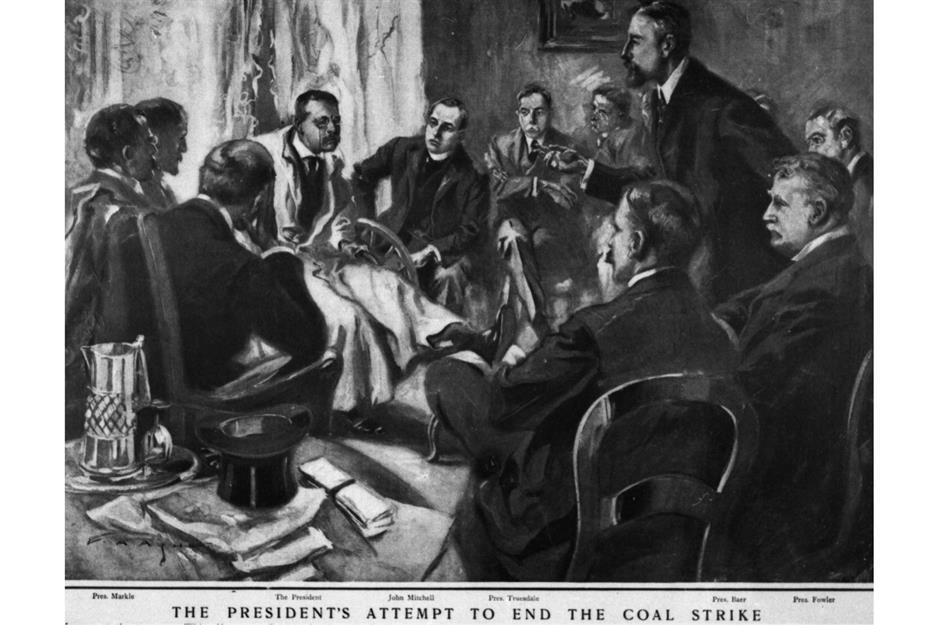
The East Pennsylvania coal fields pretty much powered America at the time and, as the strike dragged on into the fall, President Theodore Roosevelt feared it would lead to a major energy crisis and mass social unrest that winter.
Instead of ordering the suppression of the walkout, the president attempted to mediate. Thanks to the involvement of industrialist J. P. Morgan, the strike ended on October 23, 1902, after a compromise was reached that saw workers receive a 10% raise. The typical working day was also trimmed from 10 hours to nine.
The General Motors Strike of 1998: 152,200 workers

The 1990s was a tumultuous time for America's auto industry and United Auto Workers staged its second major strike of the decade in 1998.
What began as a small-scale walkout at GM's Flint plant turned into a nationwide stoppage that involved 152,200 workers. Key grievances centered on staffing, health, and safety issues, coupled with an alleged failure by GM to carry out a multimillion-dollar plant upgrade.
The General Motors Strike of 1998: 152,200 workers
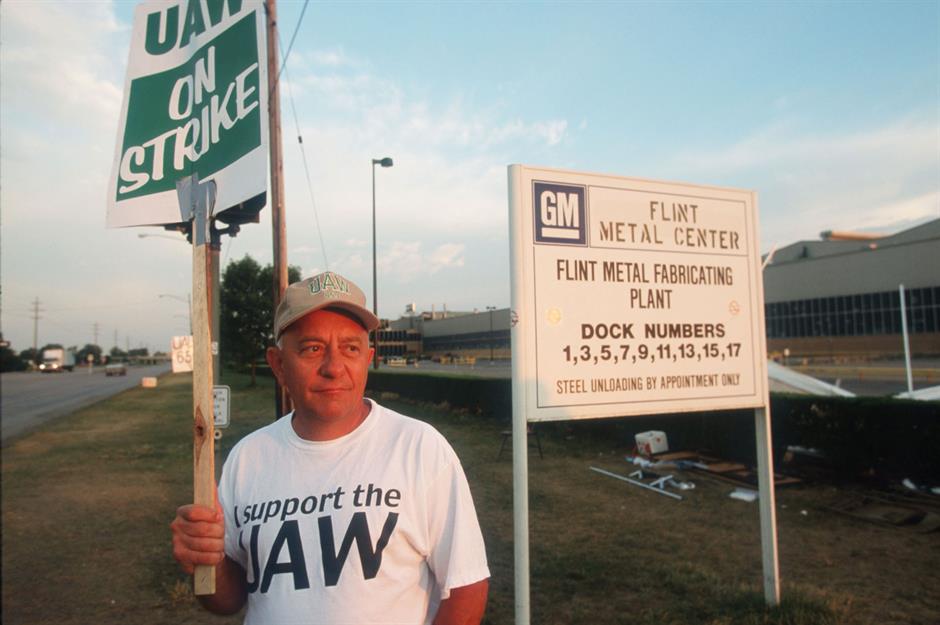
The strike ended after 54 days when both parties came to a resolution, which included a promise from management to invest $180 million ($337 million today) in the plant upgrade.
GM took a $900 million (around $1.8 billion in 2023) hit from the 1996 strike. However, the 1998 walkout was even costlier, putting a $2 billion ($3.7 billion today) hole in the company's profits and shaving 2% from its market share, which the company has never managed to claw back.
The SAG-AFTRA Strike of 2023: 160,000 workers
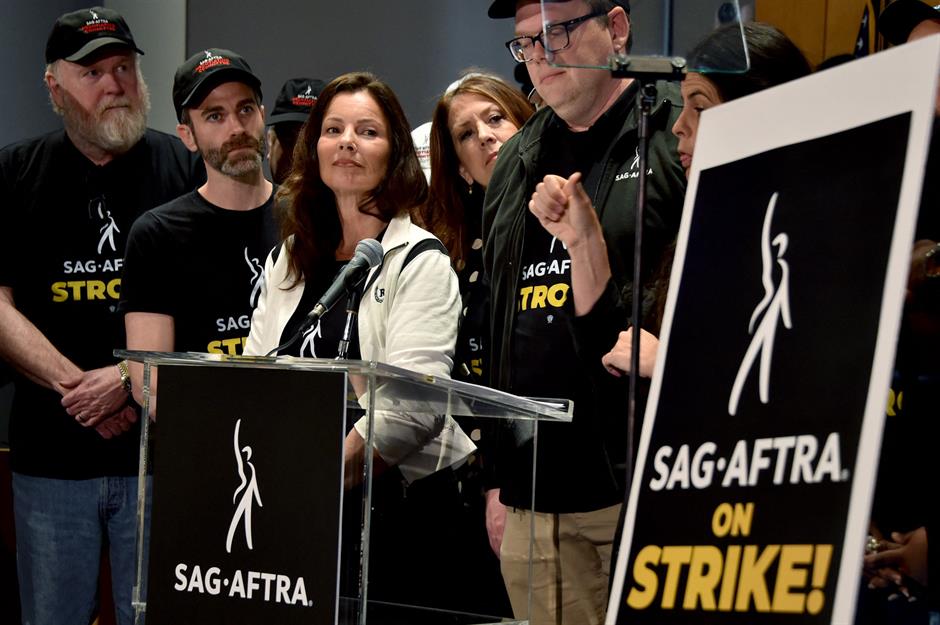
At loggerheads with the Alliance of Motion Picture and Television Producers (AMPTP), the 160,000 members of the Screen Actors Guild – American Federation of Television and Radio Artists (SAG-AFTRA) went on strike on July 14 of this year.
The union, which is led by The Nanny star Fran Drescher, joined the 11,500-strong Writers Guild of America, which had walked out on May 2.
The strike represents the first time that both actors and writers have withdrawn their labor since 1960.
The SAG-AFTRA Strike of 2023: 160,000 workers
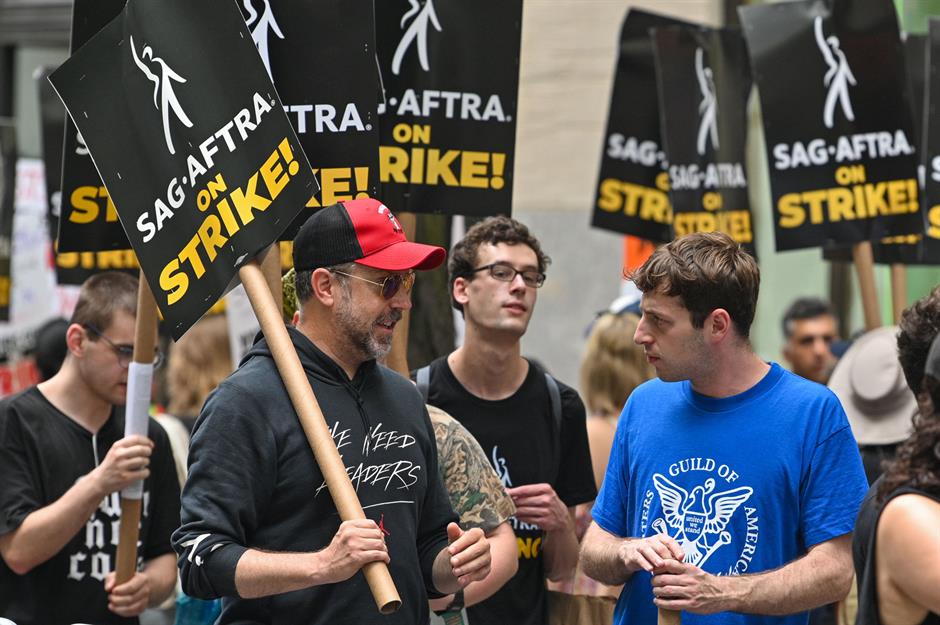
The unions are battling the studios over streaming residuals, contributions to health and retirement plans, and protections surrounding the use of artificial intelligence, which represents an existential threat to their members' livelihoods.
A-listers including Jason Sudeikis, Susan Sarandon, and George Clooney have joined the picket lines, while production on a slew of movies and TV shows including Gladiator 2, Wicked!, and American Horror Story has ground to a halt.
While the WGA has now struck a deal with the studios and streamers, the SAG-AFTRA action continues. This is a strike that could go on for many months to come, causing untold damage to the Hollywood juggernaut.
The Union of Electrical, Radio and Machinist Workers’ Strike of 1946: 174,000 workers
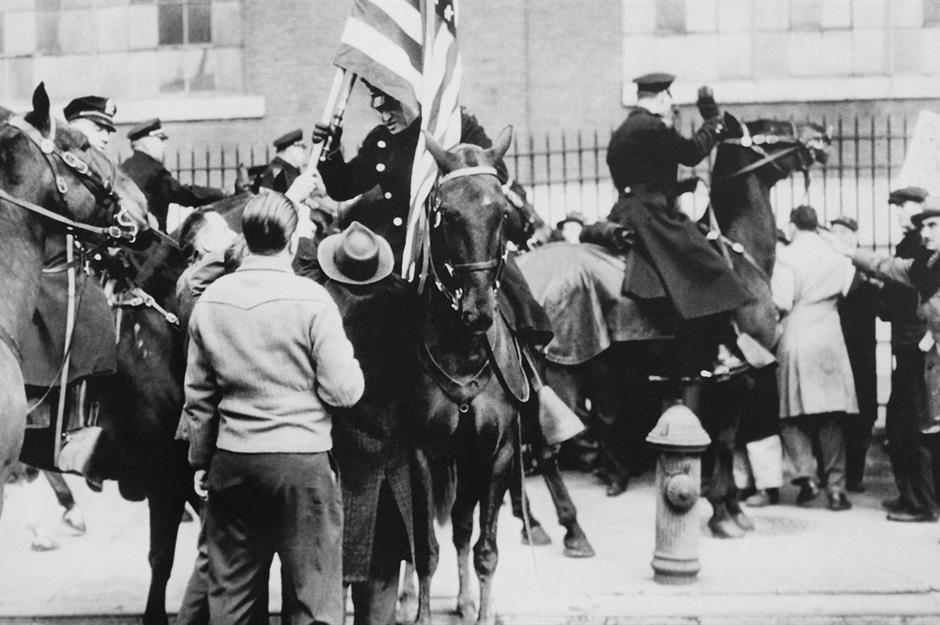
Part of the post-war strike wave, the Union of Electrical, Radio and Machinist Workers instructed its 174,000 members to down tools on January 15, 1946. Months of protracted pay negotiations had failed to bear fruit, so it was decided that a walkout was necessary.
The strike, which involved workers from General Electric, Westinghouse, and GM’s Electrical Division, was marred by a violent reaction from the authorities, with workers on picket lines beaten by mounted police.
The Union of Electrical, Radio and Machinist Workers’ Strike of 1946: 174,000 workers
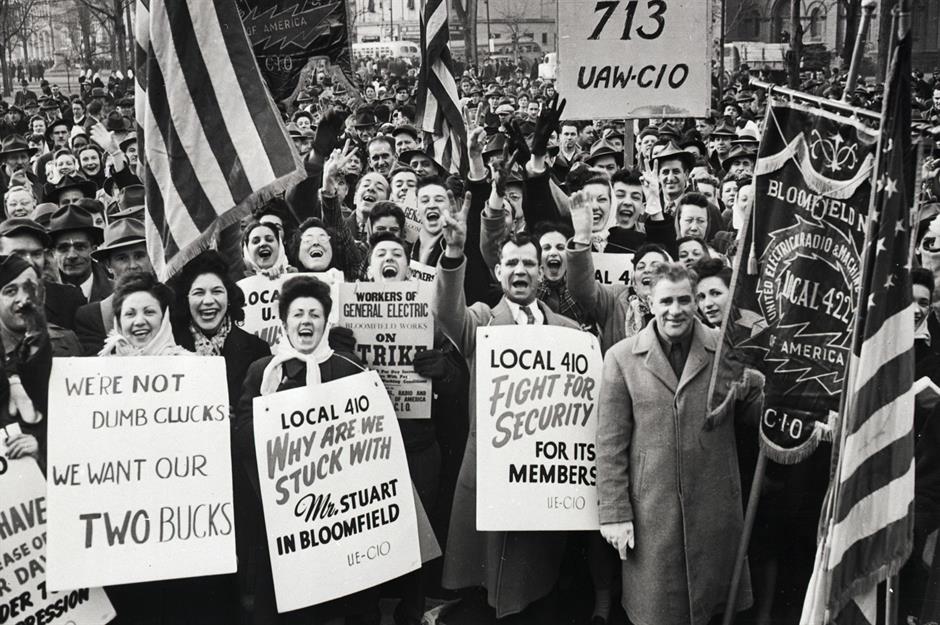
The strike persisted until March 14, 1946, when a resolution was finally reached after the trio of employers agreed to hike up pay by 18.5%.
While this fell short of the union's demands, it was still significantly more than the figure that GE, Westinghouse, and GM had initially offered, and so was considered a victory for the union.
The United Auto Workers Strike of 1996: 177,000+ workers

The United Auto Workers Union doesn't mess around when it comes to fighting for its members' rights. The union has called for numerous work stoppages since its formation in 1935 and, as already mentioned, is currently in the midst of a dispute with Stellantis, Ford, and GM.
The biggest strike in the union's history took place just after World War II, while its next most significant industrial action happened in March 1996.
The United Auto Workers Strike of 1996: 177,000+ workers
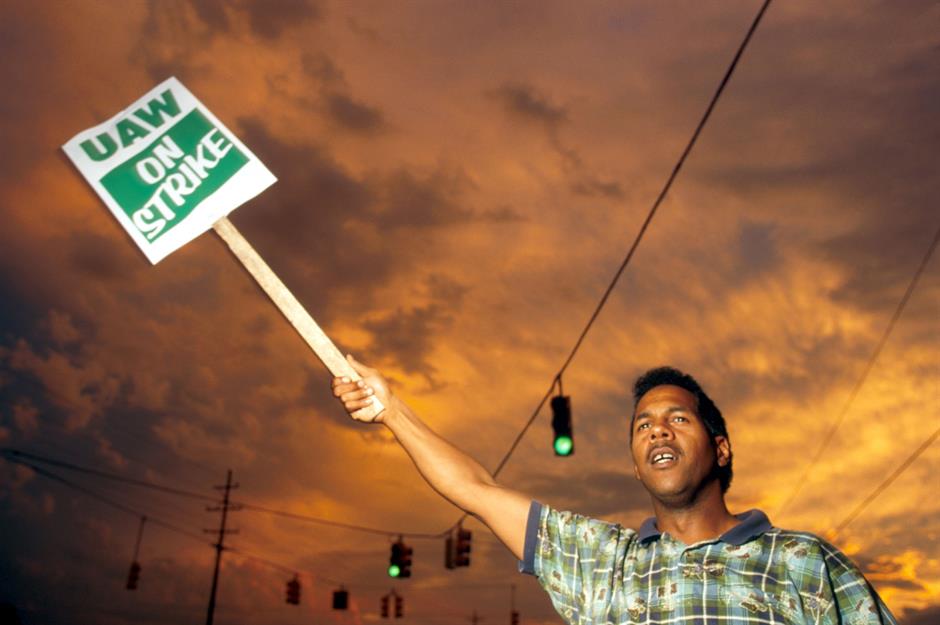
The 18-day strike involved more than 177,000 GM workers, and almost brought the automaker's North American production to a complete standstill.
The union's gripe concerned contracts for the outsourcing of parts, which was seen as a threat to members' jobs. Its fears were allayed after GM bosses agreed to honor a promise to retain and add jobs at two plants in Dayton, Ohio.
The UPS Workers Strike of 1997: 185,000 workers
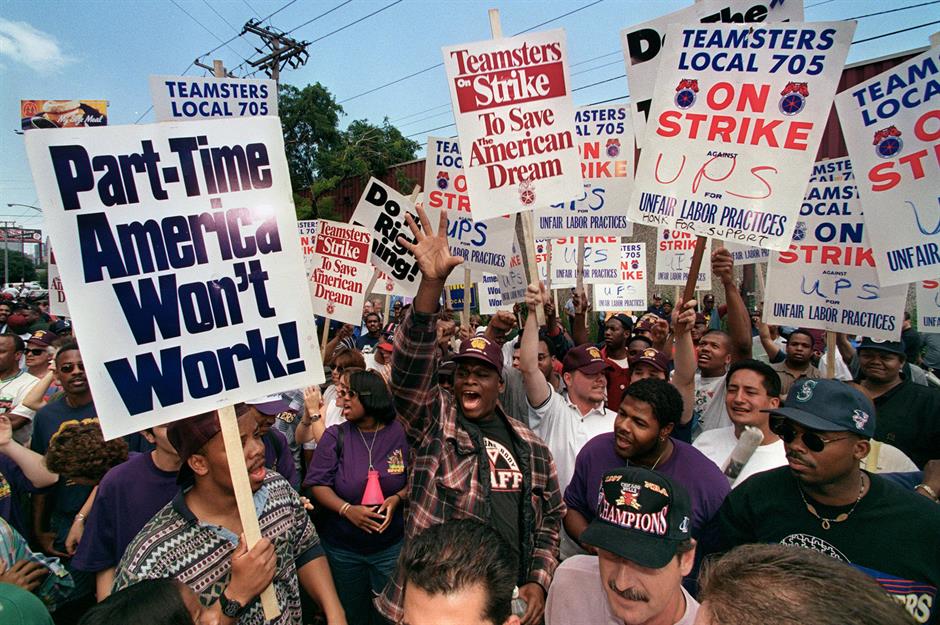
Led by the powerful Teamsters union, the UPS Workers Strike of 1997 involved 185,000 employees, who took to the picket lines to protest against pay and conditions.
For years, the parcel delivery giant had been shifting from offering higher-wage full-time jobs to lower-paid part-time roles. This, coupled with a plan by UPS to change the employee pension plan, resulted in workers taking action.
The UPS Workers Strike of 1997: 185,000 workers

The strike began on August 4, 1997, and ended just over a fortnight later. It was a victory for the union and cost UPS a painful $850 million, or $1.6 billion in today's money.
UPS bosses agreed to create 10,000 new full-time jobs by combining 20,000 part-time roles, as well as raise pay and retain the existing pension plan, while also hiking pensions up by around 50%.
This summer, there had been speculation that a fresh UPS workers strike could be imminent, with analysts predicting that a 10-day stoppage could end up costing UPS $7 billion, which would make it the most expensive US strike in more than a century. However, the Teamsters union successfully negotiated a pay rise for the workers it represents, averting a mass walkout. The new deal also gives workers an extra day of paid vacation, ends forced overtime, and will see air conditioning added to new models of the company's trucks from next year.
The Great Southwest Railroad Strike of 1886: 200,000+ workers
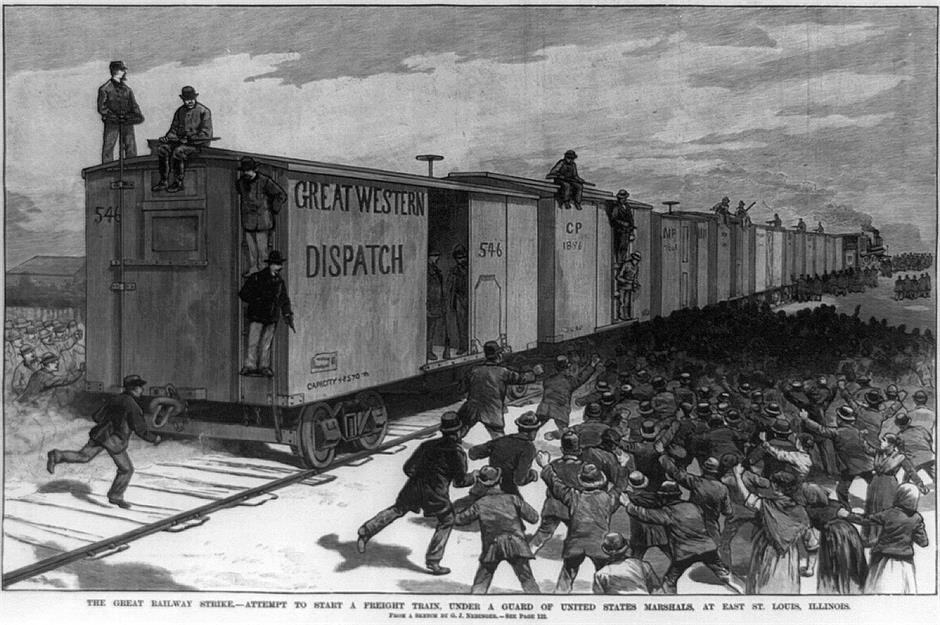
Tensions between the Knights of Labor union and the bosses of the Union Pacific and Missouri Union railroads were already high when a member was suddenly fired on March 1, 1886, for attending a union meeting. This broke an agreement that no employee would be let go "without due notice and investigation."
A mass walkout was promptly declared and, in next to no time, more than 200,000 railroad workers were on strike across Arkansas, Illinois, Kansas, Missouri, and Texas.
The Great Southwest Railroad Strike of 1886: 200,000+ workers
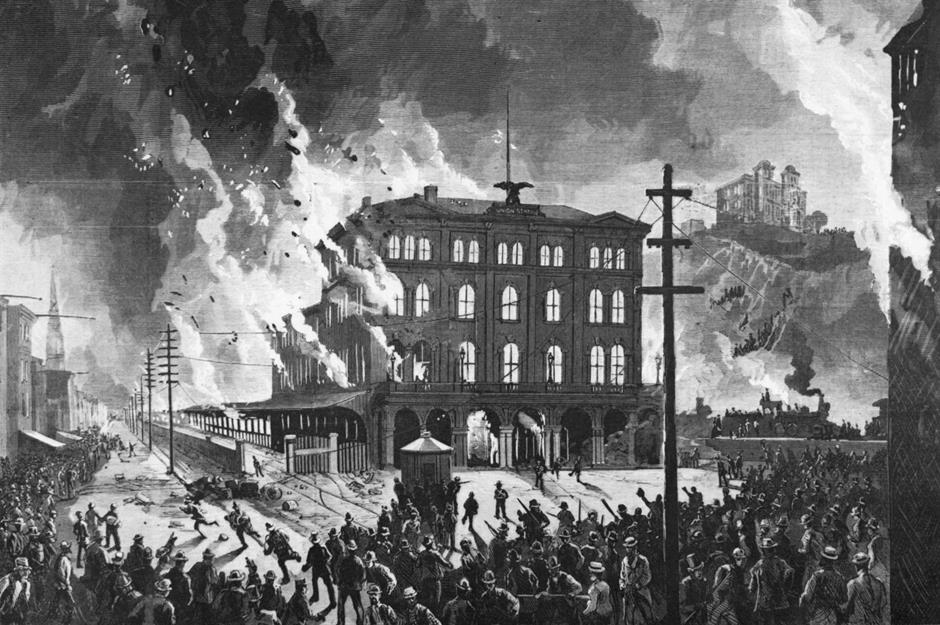
Jay Gould, the robber baron and unscrupulous owner of the railroads, brought in strikebreakers, refused to offer any concessions, and replaced the striking staff with non-unionized workers.
The industrial action swiftly became violent and at least 10 people were killed. This turned public opinion – as well as other unions – against the Knights of Labor and the strike was called off on May 4, 1886.
The failure of the walkout was the death knell for the Knights of Labor, with historian Charles Postel noting that it was "effectively destroyed as an organization."
The Great Postal Strike of 1970: 210,000 workers
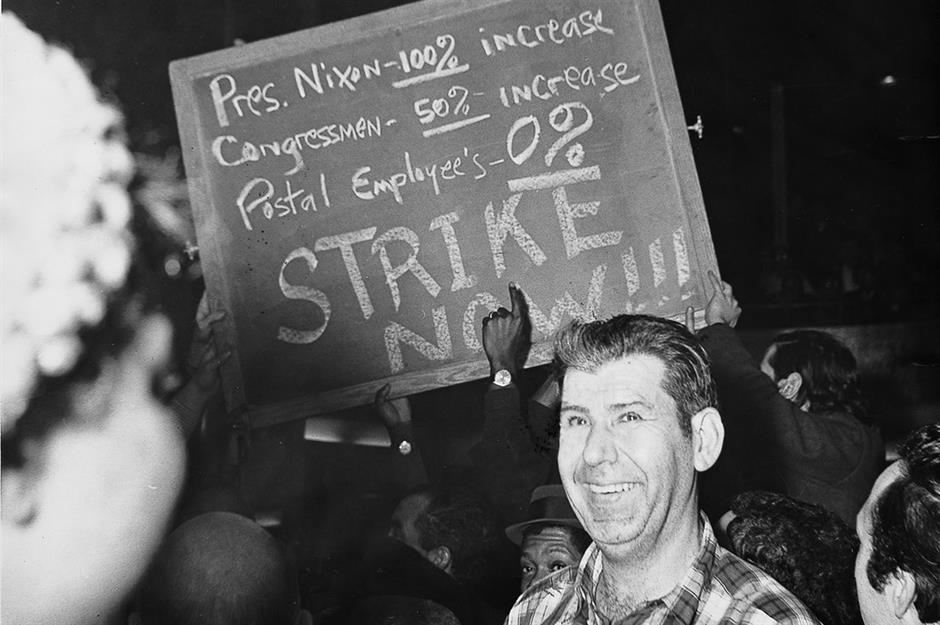
US postal workers were prohibited from engaging in collective bargaining during President Richard Nixon's administration. Morale was at rock bottom, with workers complaining about poor wages, difficult working conditions, and substandard benefits.
On March 18, 1970, postal staff in New York finally reached the end of their tether and staged a walkout. The wildcat strike started a domino effect across the nation and a total of 210,000 workers took part in the resulting industrial action.
The Great Postal Strike of 1970: 210,000 workers

With America's postal system on its knees, Nixon attempted to outwit the strikers by sending in the National Guard to distribute mail. The chaos continued, however, no doubt to the delight of the disgruntled workers.
The strike ended after eight days when the Post Office Department and workers' representatives entered into negotiations. The strikers' demands were eventually met, with employees receiving a raise of 8% and the reinstatement of their right to bargain collectively.
The walkout remains the first and largest strike against the US federal government.
The Pullman Strike of 1894: 250,000 workers
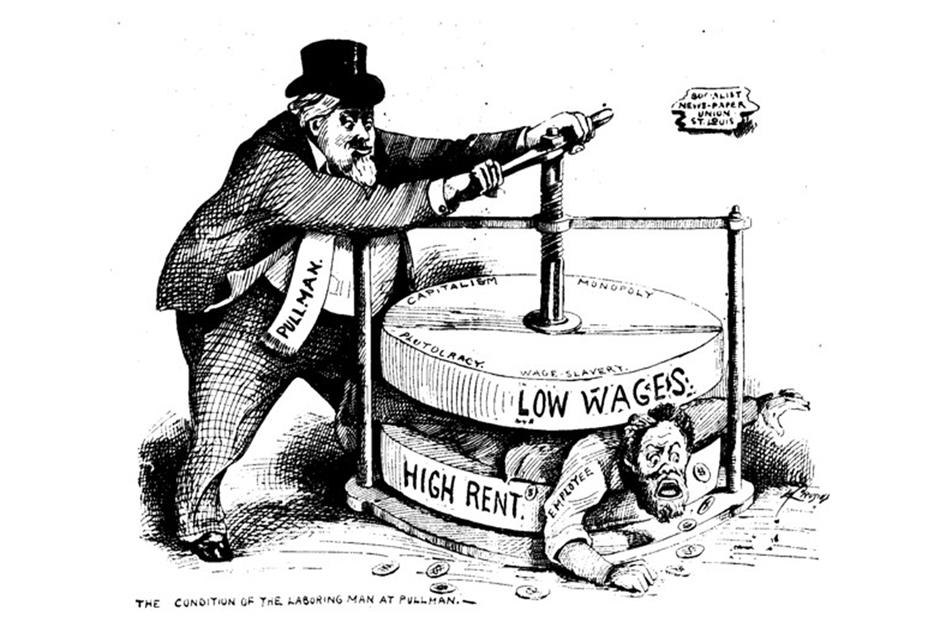
With the US in the midst of the economic depression that had been sparked by the Panic of 1893, hard-up employees of the Pullman Palace Car Company saw their wages slashed by 25%.
However, the rent they paid for their homes in Pullman, a company town near Chicago, wasn't lowered accordingly. This triggered a wildcat strike by 4,000 employees on May 11, 1894.
By the summer of that year, they'd been joined by members of the American Railway Union. All in all, an estimated 250,000 workers across 27 states participated in the industrial action.
The Pullman Strike of 1894: 250,000 workers
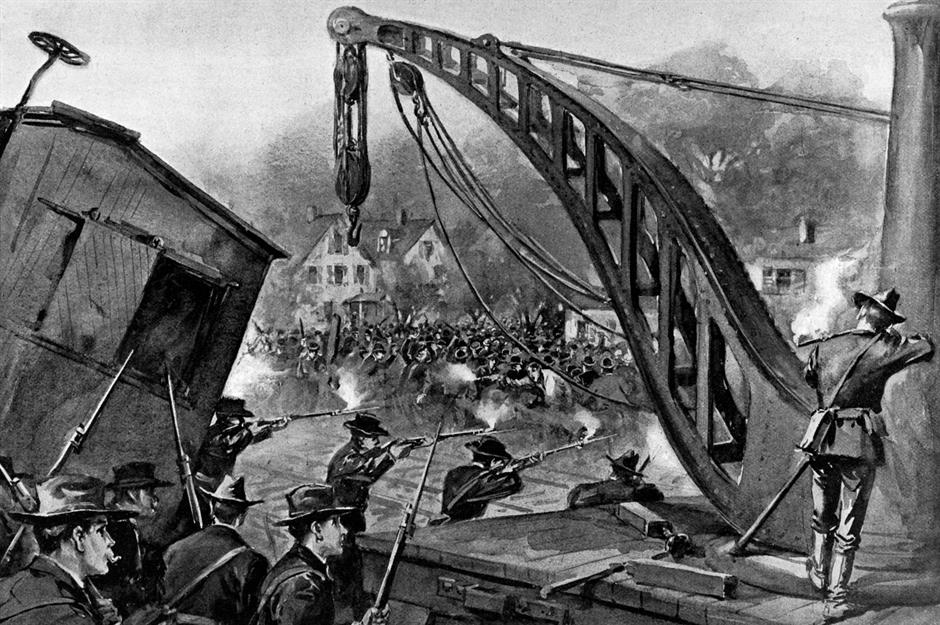
The strike effectively paralyzed all rail traffic west of Chicago, causing massive disruption. Things turned nasty at the end of June when workers began to riot in the Windy City.
The federal government responded by sending in the military and, on July 7, 1894, troops fired into a crowd of rioters, killing up to 30 people. This spelled the end of the strike and Pullman eventually agreed to rehire staff on the condition that they pledge to never join a union.
While the strike ended in defeat, it did bring about the creation of the Labor Day holiday, which President Grover Cleveland introduced during the walkout as a concession to America's labor movement.
The United Auto Workers Strike of 1945–1946: 320,000 workers
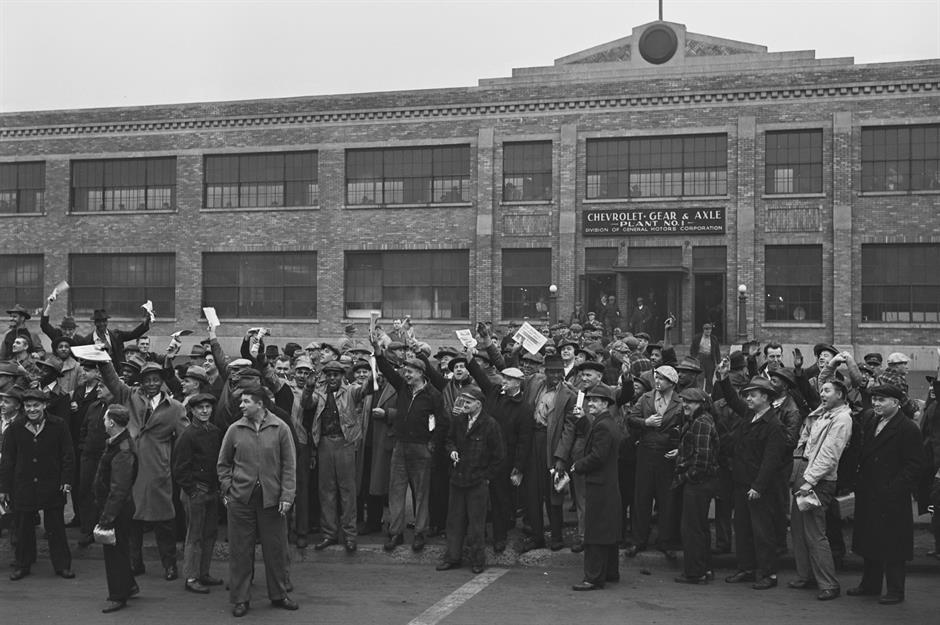
During World War II, unions upheld a no-strike pledge so as not to interfere with America's war effort.
When hostilities ended in September 1945, however, workers once again embraced industrial action to protest against poor wages and working conditions.
Pent-up grievances came to the surface and a tidal wave of strikes followed, with more than five million Americans downing tools between the end of 1945 and the start of 1946. Among the most significant walkouts was the United Auto Workers Strike.
The United Auto Workers Strike of 1945–1946: 320,000 workers
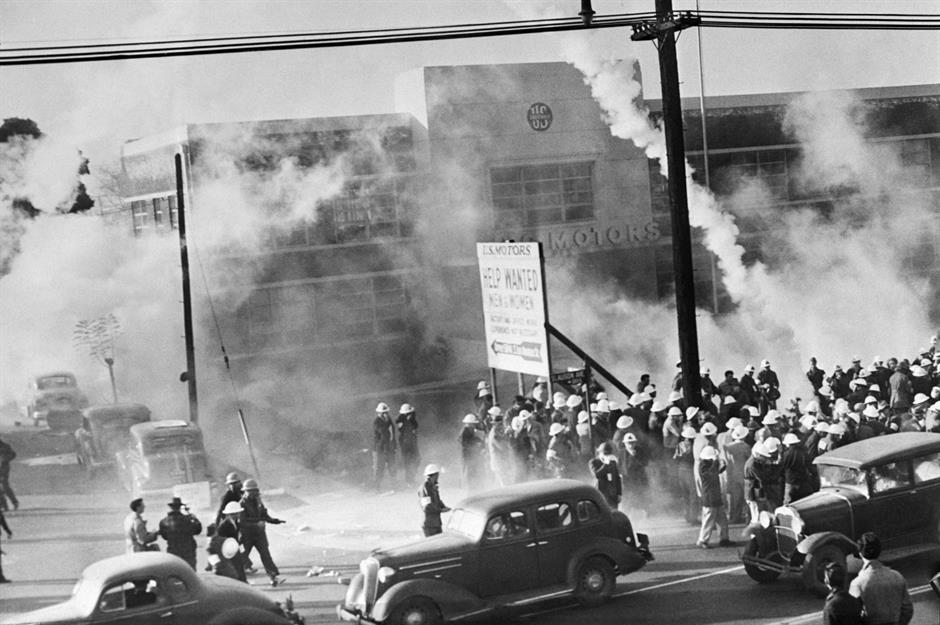
The union demanded a 30% pay increase from General Motors (GM), yet was offered just one-third of what they asked for.
On November 21, 1945, an estimated 320,000 workers from 96 plants staged a mass walkout. The strike, which led to rioting at times, came to an end on March 13, 1946, when GM offered workers a 17.5% raise, paid vacations, and overtime pay.
The Steel Strike of 1919–1920: 350,000 workers
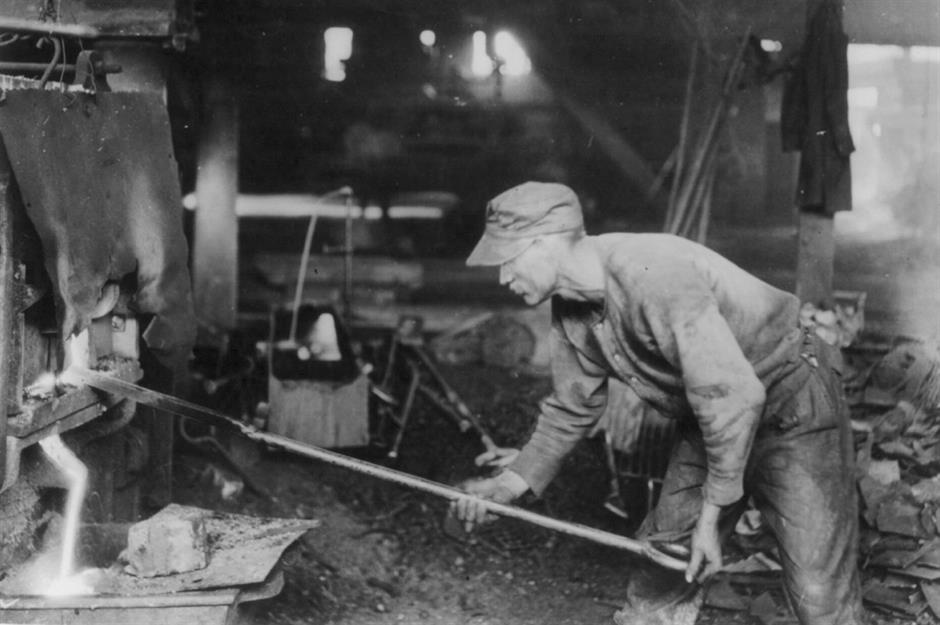
During World War I, the National War Labor Board was set up to mediate industrial disputes and keep America's war machine running. Employers promised to improve working conditions and recognize unions, while employees agreed to a moratorium on strikes.
The war ended in November 1918 and the National War Labor Board was dissolved the following May, along with the increased protections for workers.
U.S. Steel, which was America's largest employer at the time, took full advantage. The company refused to grant unions any recognition and resumed a campaign of harassment and intimidation of unionized staff.
The Steel Strike of 1919–1920: 350,000 workers
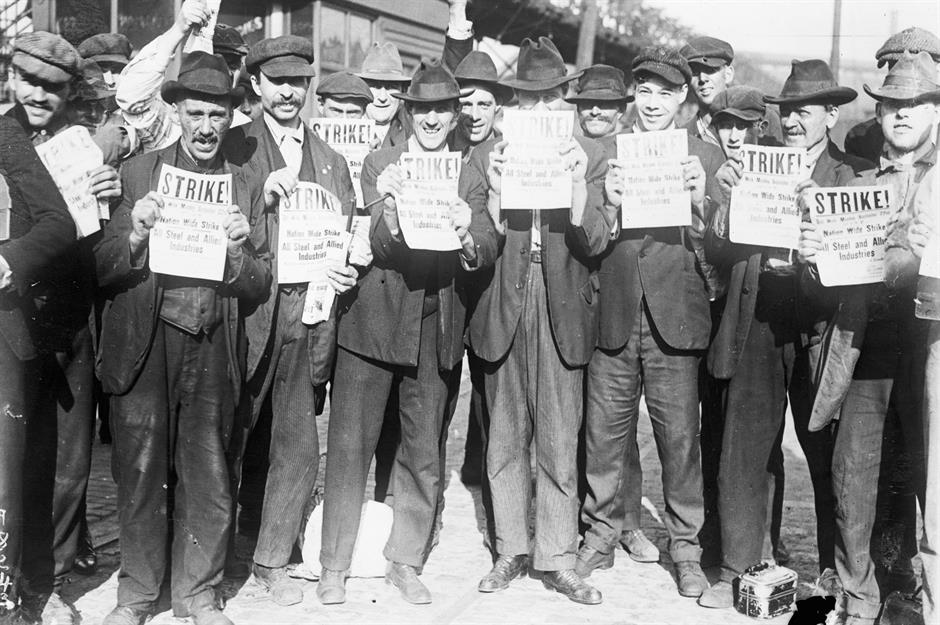
With working conditions worsening and rampant post-war inflation eroding wages, around 350,000 U.S. Steel workers went on strike in September 1919. But the industrial action was doomed to fail.
Employers stoked ethnic tensions among the strikers to divide and conquer. With the help of the press, they also turned the American public against the workers by playing on fears of communism, alleging that the unions were planning a Bolshevik takeover of the country.
Race riots and union infighting ensued, and the strike collapsed on January 8, 1920.
The Great Railroad Strike of 1922: 400,000 workers
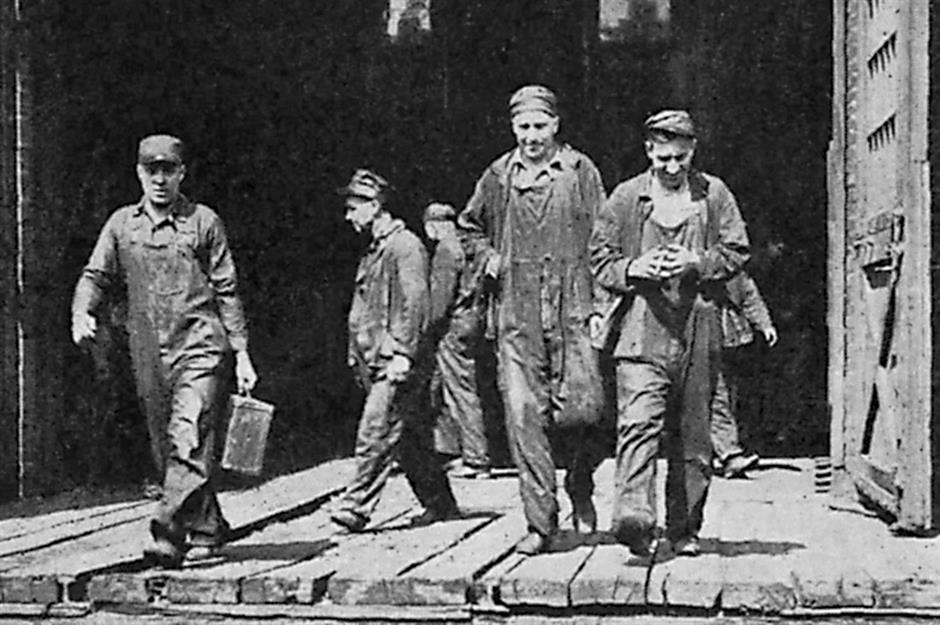
As US production plummeted, the rampant inflation of the late 1910s turned rapidly to the other extreme – drastic deflation – during the early 1920s.
In response to the ever-worsening conditions, the body overseeing railroad maintenance workers' pay authorized employers to cut wages by an average of 12% in 1922.
Needless to say, this didn't go down well. On July 1, 1922, seven out of America's 16 railroad unions went on strike, with 400,000 shopmen and maintenance staff taking part in the industrial action.
The Great Railroad Strike of 1922: 400,000 workers
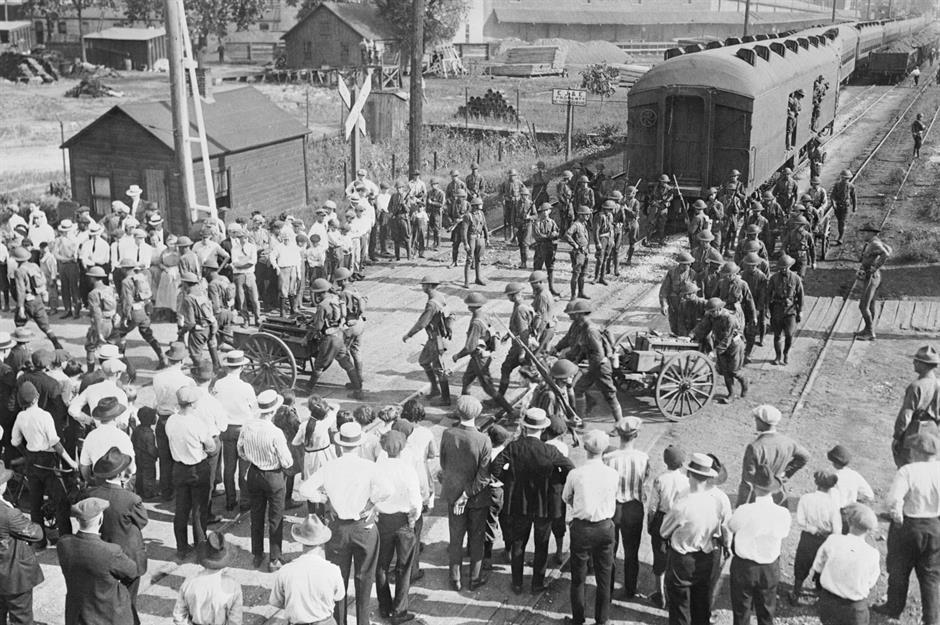
Employers came down hard on the strikers. Heavies were hired to break their resolve and the strike was characterized by shocking violence, with 10 people killed. A judicial injunction issued in September 1922 brought the strike to an end and the embattled unions eventually accepted a 5% pay cut in October.
While it ultimately failed, the strike did lead to the passing of the Railway Labor Act in 1926, which guaranteed the rights of workers to organize and join unions.
The United Mine Workers of America Strike of 1946: 400,000 workers
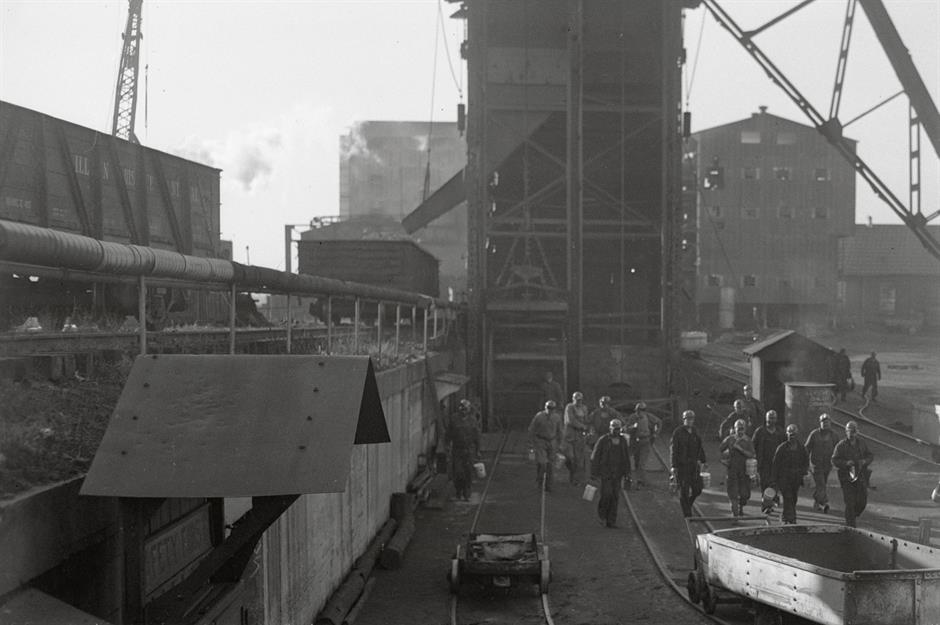
The United Mine Workers of America Strike (also referred to by some as the "Bituminous Coal Strike") was the largest walkout of the post-war strike wave. It's also the largest strike in US history in terms of cumulative workdays lost, with a grand total of 70.4 million.
It's estimated that 400,000 miners from across 26 states deserted the pits on April Fool's Day 1946 to hit the picket lines.
The United Mine Workers of America Strike of 1946: 400,000 workers
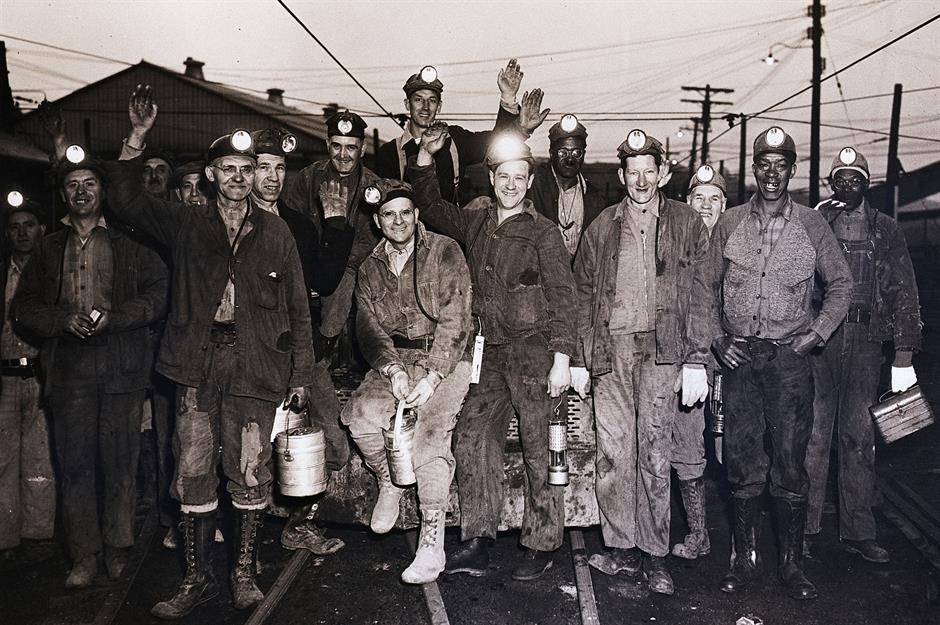
The union was after three key improvements for workers: better pay, safer working conditions, and an employee health plan.
President Harry S. Truman eventually stepped in but his proposed settlement was rejected. The 33rd POTUS reacted by fining the workers $3.5 million (around $55 million in today's money), forcing the end of the strike on December 7, 1946.
Despite the fine, the workers' demands were met. Salaries were hiked, mine safety was improved, and health and welfare funds were created.
The Textile Workers Strike of 1934: 400,000+ workers
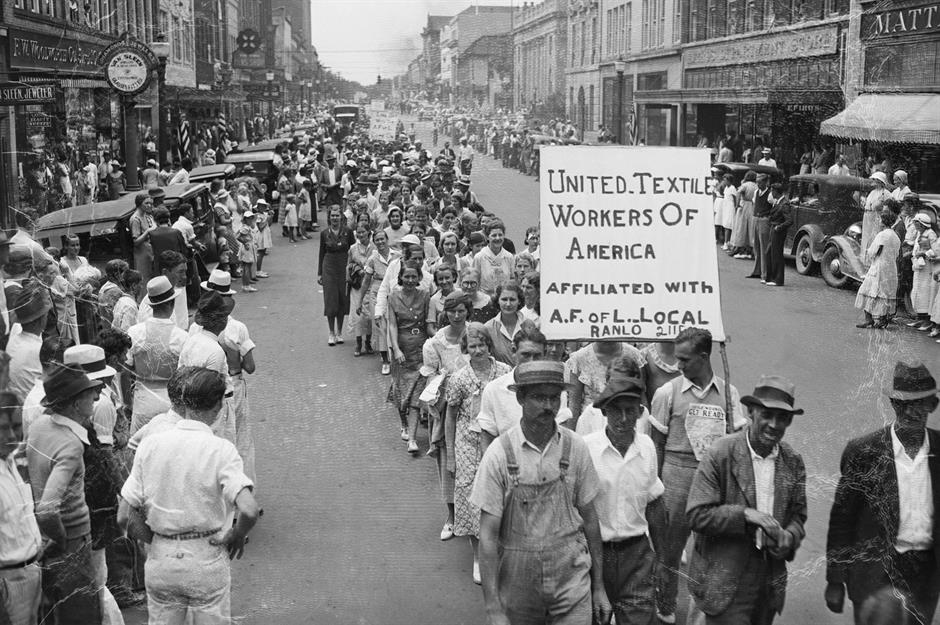
The Textile Workers Strike of 1934 (also referred to as the 'Uprising of '34') involved more than 400,000 employees from the Southern and Mid-Atlantic states, as well as New England. At the time, it was the largest walkout in US history.
During the 1920s, America's textile industry was pummeled by oversupply due to a lack of demand and growing competition from overseas. Employers reacted by squeezing more work out of their staff, who were forced to toil harder for less money.
The Textile Workers Strike of 1934: 400,000+ workers
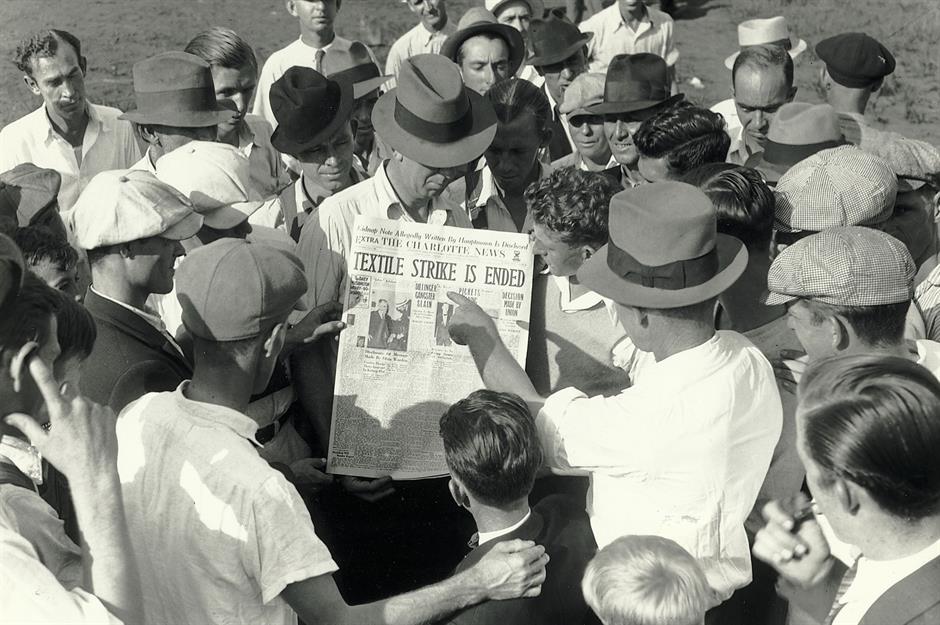
The Great Depression made matters even worse, and by 1934 workers were at breaking point.
On Labor Day 1934, the United Textile Workers of America union called for its members to strike and they duly complied. However, a surplus of inventory and a lack of relief assistance for the strikers put paid to the industrial action, which was also subject to violent suppression by the authorities.
The action ended on September 23, 1934, following a plea from President Franklin D. Roosevelt. The union failed to have its demands met and tens of thousands of workers were blacklisted by their employers.
The Steel Strike of 1959: 500,000 workers

As a consequence of the post-war strike wave, Congress enacted the Taft-Hartley Act of 1947, which restricted the power of America's unions. The legislation didn't, however, prevent steel workers from walking out en masse in 1959.
On July 15 of that year, half a million members of the United Steelworkers of America went on strike to demand better pay, and protest against plans by employers to eliminate a clause in workers' contracts that protected their jobs and hours.
The Steel Strike of 1959: 500,000 workers

The biggest strike in American history in terms of the number of workers taking part, the action lasted until November 1, 1959.
It was an undeniable victory for the union. In compliance with its demands, wages were raised to a satisfactory level and employers agreed to maintain the contract clause, meaning that jobs and hours were protected for the nation's legions of steelworkers.
Now discover how many hours people have been expected to work throughout history
Comments
Be the first to comment
Do you want to comment on this article? You need to be signed in for this feature